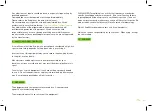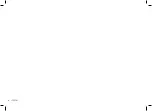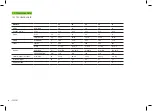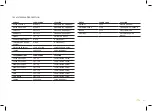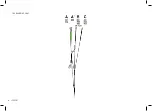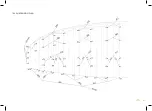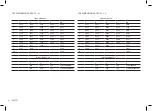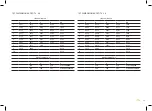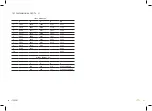
11
does not, try to weight-shift towards the collapsed side. If this does not
resolve the issue, pull the brake handle on the collapsed side decisively
and quickly all the way (100%) down and release it back up immediately.
You may have to repeat this action to provoke the re-opening of the
collapsed glider side. Do not over-brake or slow down the flying side of
the wing (control the turn). Once the collapsed side is open make sure you
return to normal flying speed.
Frontal collapse
Due to the KOYOT 4 ’s design, in normal flying conditions frontal
collapses are unlikely to take place. The wing’s profile has great buffering
abilities when dealing with extreme incidence changes. A frontal collapse
may occur in strong turbulent conditions, entering or exiting powerful
thermals. Frontal collapses usually re-inflate without the glider turning, but
a symmetrically applied quick braking action with a quick deep pump of
both brakes will accelerate the re-inflation if necessary. Release the brake
lines immediately to return to default glider air speed.
Negative spin
A negative spin does not conform to the KOYOT 4 ’s normal flight
behaviour. Certain circumstances however, may provoke a negative spin
(such as trying to turn when flying at very low air speed whilst applying
a lot of brake). It is not easy to give any specific recommendation about
this situation other than quickly restoring the wing’s default air speed
and angle of attack by progressively reducing the tension on the brake
lines. The normal wing reaction will be to have a lateral surge on the re-
accelerated side with a rotation not greater than 360º before returning to
default air speed and a straight flight path trajectory.
Parachutal stall
The possibility of entering or remaining in a parachutal stall have been
eliminated from the KOYOT 4 .
A parachutal stall is virtually impossible with this wing. If it did enter into
a parachutal stall, the wing loses forward motion, becomes unstable
and there is a lack of pressure on the brake lines, although the canopy
appears to be fully inflated. To regain normal air speed, release brake line
tension symmetrically and manually push on the A-lines or weight-shift
your body to any side WITHOUT PULLING ON THE BRAKE LINES.
Deep Stall
The possibility of the KOYOT 4 stalling during normal flight is very unlikely.
It could only happen if you are flying at a very low air speed, whilst over-
steering or performing dangerous manoeuvres in turbulent air.
To provoke a deep stall, the wing has to be slowed down to its minimum
air speed by symmetrically pulling the brake lines all the way (100%) down
until the stall point is reached and held there. The glider will first pitch
rearward and then reposition itself overhead, rocking slightly, depending
on how the manoeuvre is done.
When entering a stall, remain clear-headed and ease off the brake lines
until reaching the half-way point of the total brake travel. The wing will
then surge violently forward and could reach a point below you. It is most
important to maintain brake pressure until the glider has returned to its
default overhead flying position.
To resume normal flight conditions, progressively and symmetrically
release the brake line tension to regain air speed. When the wing reaches
the overhead position, the brakes must be fully released. The wing will
then surge forward to regain full air speed. Do not brake excessively at
this moment as the wing needs to accelerate to pull away from the stall
configuration. If you have to control a possible frontal collapse, briefly
pull both brake handles down to bring the wing back up and release
them immediately while the glider is still in transition to reposition itself
overhead.
Cravat
A cravat may happen after an asymmetric collapse, when the end
of the wing is trapped between the lines. Depending on the nature
of the tangle, this situation could rapidly cause the wing to spin. The
Summary of Contents for KOYOT 4
Page 1: ...KOYOT 4 User s manual...
Page 18: ...18...
Page 19: ...19...
Page 22: ...10 3 RISERS PLAN 22...
Page 23: ...10 4 SUSPENSION PLAN 23...
Page 29: ...niviuk com...

















